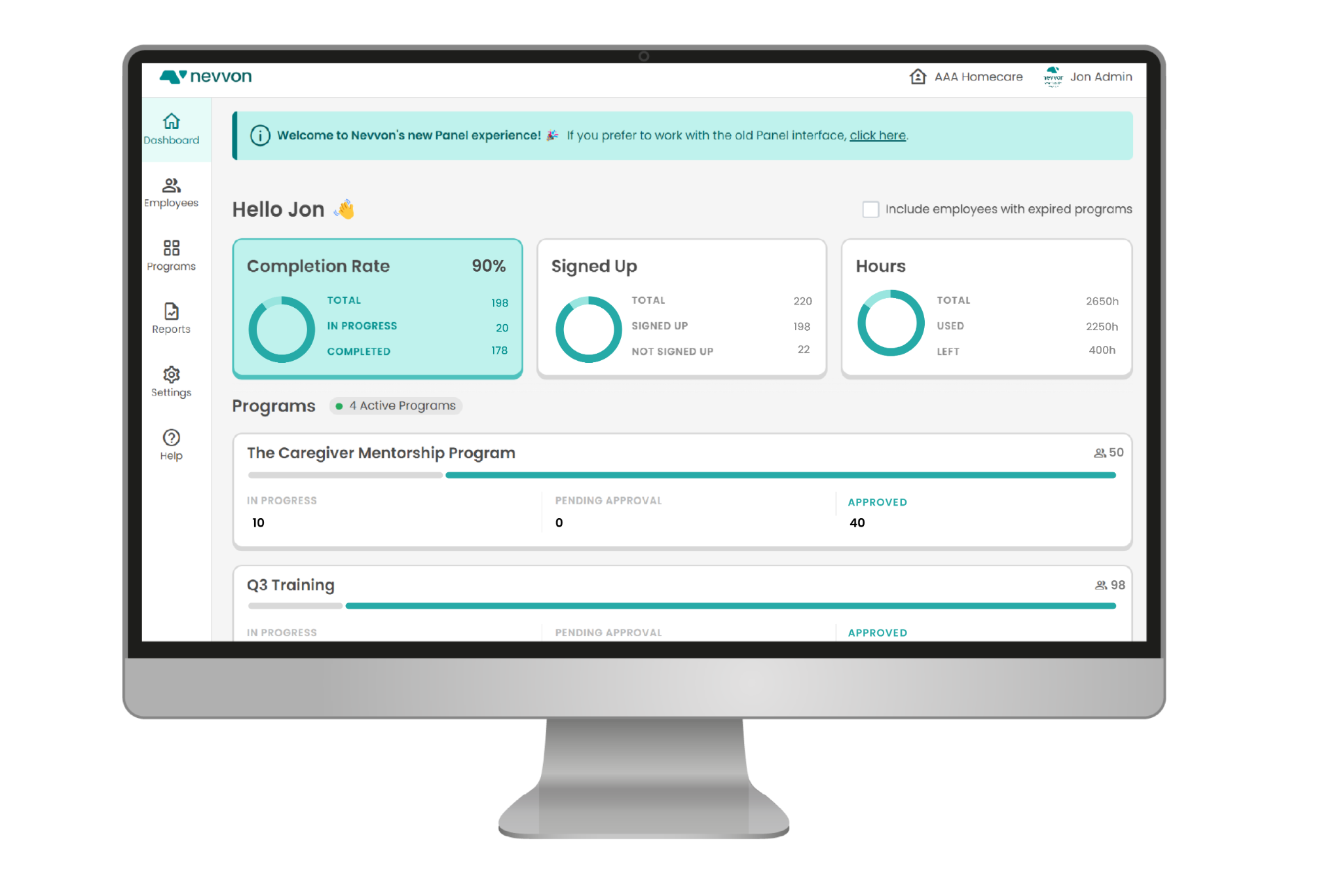The Compliance Headache You Don’t Need Anymore
Compliance is a constant challenge in home care. From caregiver training records to electronic visit verification (EVV), agencies must keep meticulous records. However, managing compliance manually is inefficient and prone to errors, leaving agencies vulnerable to penalties and audit failures.
Common compliance pain points include:
-
Tracking caregiver certifications and renewals
-
Maintaining training completion records
-
Managing complex state-specific regulations
-
Generating on demand reports
-
Ensuring seamless system integrations
These challenges lead to wasted time, staff burnout, and compliance risks. Fortunately, automation eliminates these burdens and streamlines compliance management.
How Top Agencies Stay Audit-Ready (Without the Stress)
Home care agencies using automated compliance solutions benefit from:
1. Automated Tracking and Reporting
Instead of sifting through spreadsheets or paper records, agencies can instantly generate real-time compliance reports. Automated tracking ensures that training deadlines and certification renewals are never missed.
2. Seamless Integrations
Many agencies struggle with fragmented systems, requiring staff to manually input data across multiple platforms. Automated compliance platforms integrate with Electronic Health Records (EHRs), payroll, and Agency Management Systems (AMS), HRIS systems, ensuring a seamless flow of data.
3. Effortless Training Compliance
Ensuring that caregivers complete required training can be a logistical nightmare. Automated training platforms provide:
-
Mobile-friendly training so caregivers can complete courses anytime, anywhere.
-
Automated reminders to reduce administrative follow-up.
-
Instant certification tracking to verify compliance.
4. Audit-Ready Documentation
Auditors often request different sets of data depending on state regulations and payor requirements. Automated systems allow agencies to quickly generate and customize reports to match any audit request, minimizing disruption to operations.
5. Proactive Compliance Alerts
With manual systems, compliance gaps often go unnoticed until an audit is imminent. Automated compliance solutions provide real-time alerts when caregiver training, or required documentation is overdue or expired.
The Future of Compliance: Why Automation is a Must
With increasing regulatory demands, home care agencies can no longer afford to rely on outdated, manual systems. Automation provides a cost-effective, scalable, and stress-free way to ensure compliance, reduce administrative burdens, and improve caregiver retention.
By implementing compliance automation, agencies can:
-
Eliminate last-minute audit stress
-
Reduce administrative workload
-
Ensure full regulatory compliance with minimal effort
-
Improve caregiver training completion rates
-
Boost operational efficiency and accuracy
Stay Ahead of Compliance Challenges
The home care landscape is evolving, and compliance expectations are only becoming more stringent. Agencies that embrace automation now will not only protect themselves from fines and disruptions but will also gain a competitive advantage in efficiency and caregiver satisfaction.

